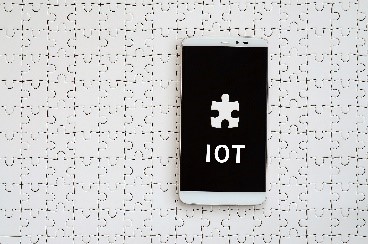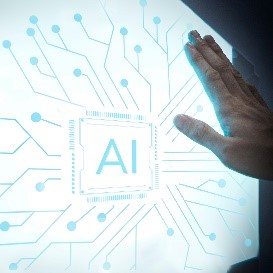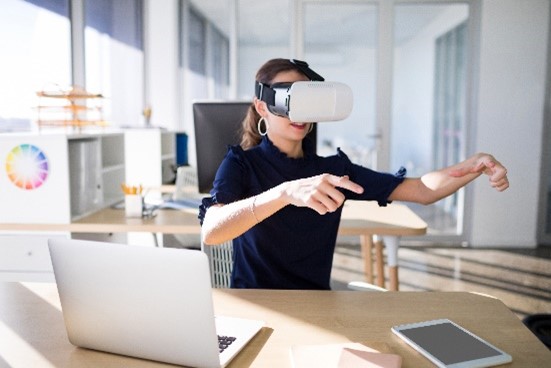Written by John Cronin CEO and Chairman of ipCapital Group, inc.
This article is also available as a PDF
One way to innovate is to ensure that the megatrends are evaluated in your innovation processes. Megatrends, by definition, have shown they are customer-driven needs! Of course, there could be differences of opinions as to what constitutes a megatrend in your company. Still, it would be worthwhile to review these five megatrends we have chosen and see how they can change your innovations and R&D. If you see other megatrends, slot them in our list and then consider how the megatrends.
Have you ever considered formally adding megatrends into your innovation roadmaps, brainstorming sessions, or project plans?
We would recommend you run systematic invention sessions to consider these. Hopefully, you will get hundreds of ideas that will boil up to several innovations to consider adding to your R&D pipeline!
ipCapital Group Inc[1]. has worked for 15% of the F500 and has over 1500 engagements in 25 years that focus on enhancing innovations, inventions, and related Intellectual property ownership!
1. Every Device will collect data, and every object will become a device
The world is undoubtedly driven to have data generated at every step at the consumer level or even B2B. It doesn’t take more than five minutes to go on a crowd product website like kickstarted or browse Amazon or Alibaba. “The number of Internet of Things (IoT) devices worldwide is forecast to almost triple from 8.74 billion in 2020 to more than 25.4 billion IoT devices in 2030.”[2].
Who would have thought your mop would be equipped with a device and a consumable such as the Swiffer Wetjet or your meat thermometer would be wireless connected to your phone and programmed to alert you when your steak is precisely the way you like it? There doesn’t appear to be any object we use physically safe from a device (and its data) to be added to our daily lives.
Does your company need more convincing that they should evaluate all its product and services and ask how we can add a device and get more data? Will you jump on the IoT bandwagon either for internal processes or external products as the world is doing? Do you have the core skills in your company to start this process if you haven’t already?
2. AI/ML moves from BPA, RPA to now to the hundreds of ways to correlate data
In the 1990s, we all adopted Business Process Automation (BPA) in software programs to simplify everything from data entry to project planning and interacting with our customers. BPA automation moved to Robotic process Automation (RPA) in the 2000 timeframe. BPA form entry processes became even more automated. The automation connects the BPA workflows to automated data updates from connected databases or the web. Then came the development of sophisticated algorithms, from creating risk profiles on our data to understanding insights about our customers.
Automation moved to the next phase in 2020, where Artificial Intelligence and Machine Learning can mine enormous amounts of data to give us insights. AI is everywhere, from post-operatively planning our health programs to AI determining the best images on our cereal boxes.
Unfortunately, many companies do not have the expertise in this area to innovate. Ironically, these companies (may that’s yours) think enhancing the capability is farfetched. But, the world is very flat, and 3rd party gig resources can be brought in cheaply and quickly to get near-immediate results. Most of the sophisticated AI codes are now open-sourced, and you can “pay by the bite” on Amazon, Oracles, IBMs, or Google’s web services.
Don’t be left out of this revolution, as the barrier to entry is so low. You may need a guide to get started!
3. Leveraging no code/low code
If you have just seen this no-code[3] / low code[4] concept, don’t be surprised, most people are just finding out about these concepts. What started in 2014 or so, new software platforms got created to bring programming capabilities into the “bookkeepers, administrators, or scientist office.” In essence, everyone can now program like they can make excel, PowerPoint, or word. Low-Code / No-Code is a fantastic capability to make every aspect of internal operations hyper-efficient and make every customer interaction of B2B connection ultra-personalized and just in time.
You might not think of simply getting your admin to create code to make their life easier or having your customer support team have a more integrated customer response platform. Still, these innovations are making huge innovations inroads. Consider Rabobank, which serves 9 million clients and has 40% of the corporate lending market in the Netherlands. They wanted to put customers first to streamline the lone process. They decided to use a low-code platform to digitize and then automate commercial lending and leasing. Rabobank reduced the loan approval process from several weeks to one to two days and leased approval in minutes. The customers were delighted, and Rabobank ended up with a cost savings of almost a hundred million a year.
Getting started on a low code / no code journey, like Rabobank, requires invention sessions to lay out the opportunities, and then selecting and then coding (in prototypes) to get results and slowly releasing the updated customer interactions in low-risk steps. Why wouldn’t anyone want to innovate this way incrementally?
4. Digitization, datafication, and virtualization
Another driver of Innovation in any company is digitizing and virtualizing data. Just like in 1995, we all heard we needed websites, domain names versus telephone books and directories. Websites have come a long way to be dynamic, interactive, and even chase your customers for the business. The future leads us to create datafication of every keystroke, create insights from this data, and then move to data virtualization[5]. There are many use cases for Data Virtualization from virtual shopping, trying on clothes virtually, or even entering into Zuckerberg’s metaverse[6] to do office work or interact with customers. The digitization and virtualization processes can be internal process innovations, such as creating “logical data warehouses with data virtualization” so you can “see your data and investigate your data more clearly. Another example would be to be able to “CADify” your design processes into improved or new CAD systems.
We live more and more in a virtual world, from Oculus Rift-based education or entertainment to even virtualized office work, driven more recently because of Covid.
Seeing the innovation possibilities for your company using digitization, datafication, and virtualization, if you haven’t yet embraced this direction, does require you to put on your “possibilities hat. ”
One thing is for sure. This area is likely an accessible area to think about the possibilities. It feels that the possibilities you see are possible because currently, anything you can conceive of can be accomplished in Software. So why not take the “digitation innovation plunge” to see the possibilities!
5. Sustainability
It seems like we hear more and more about “sustainability and sustainable energy.” Yesterday, an acquaintance posted that she got a job as the “sustainability director for a shoe company.”
During the pandemic, renewable energy was the only form of energy that saw usage increase. In the US, renewable energy use increased by 40%, leading to an overall reduction in emissions of 8%. This trend suggests it’s very likely that there will be increased investment in generating energy from renewables.
However, everything from reducing your carbon footprint, enhancing recycling, and making sure every part of your processes and product and service offerings are more and more green, becomes what the customer wants and becomes more cost-effective in the long run.
Innovating with sustainability takes different expertise to enter into the brainstorming sessions. It also means you may near to tear apart the processes, services, and products to find sustainability changes opportunities. Many tools can help with this in setting up your Innovation’s efforts. Wouldn’t it make sense to do “green innovation”!
[pdf-embedder url=”https://www.ipcg.com/wp-content/uploads/2022/05/Megatrend-Thinking-Innovation-Processes.pdf” title=”Megatrend Thinking Innovation Processes”]
[1] ipCG Home Page – ipCG | Innovation and IP Consulting
[2] The number of Internet of Things (IoT) devices worldwide is forecast to almost triple from 8.74 billion in 2020 to more than 25.4 billion IoT devices in 2030. – Search (bing.com)
[3] No-code development platform – Wikipedia
[4] Low-code development platform – Wikipedia
[5] Data Virtualization main Use Cases – Data Virtualization blog – Data Integration and Modern Data Management Articles, Analysis and Information






